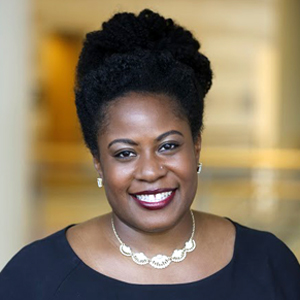
The responsibilities of a doctor to its patient, or a health researcher to its community, are many: safety, support and equity chief among them. The power and privilege health professionals wield as stewards of health and wellbeing is tremendous and thus must include consideration of the structures and systems preventing all patients and all communities from achieving good health.
Structural racism and disproportionate use of lethal force by law enforcement officers against communities of color is not new nor is the impact of structural racism in health care and health research.
“Video evidence and the advent of the Black Lives Matter movement have forced our nation to begin to grapple with the insidiousness of racism in America,” says Assistant Professor Rachel Hardeman. “Structural racism causes widespread suffering and we all have a role to play in dismantling it.”
A new Perspective in the New England Journal of Medicine, Hardeman partnered with Associate Professor Katy Kozhimannil, and Eduardo M. Medina to identify five ways clinicians and researchers can engage in dismantling structural racism and supporting black lives:
1. “Learn about, understand and accept the United States’ racist roots.”
Structural racism is built on the premise of inequality throughout the nation’s history. The notions of race throughout our past have informed health care and research, including segregation of care and experimentation on minority groups. Over time, this has led to disparate outcomes between black Americans and white Americans.
2. “Understand how racism has shaped our narrative about disparities.”
Research has long used words to imply differences between races, marking them as “intrinsic, inherited, or biologic.” These beliefs persist among even current medical students, and unless these false beliefs are challenged they will continue contributing to health inequities.
3. “Define and name racism.”
Health research and services rely on consistent and accurate terminology and measurement. Through the process of care and research, health professionals can acknowledge and name racism in their scholarship and patient interactions. This helps advance understanding of inequity and identify potential resolutions.
4. “We will have to recognize racism, not just race. … When a person’s race is ascertained and used in measurement, is it merely an indicator for race, or does it mask or mark racism?”
Successful treatment of chronic conditions requires an understanding of structural factors and social determinants of health. However, despite certain diseases impacting black Americans more commonly than white Americans, antiracism strategies are rarely a recommended part of treatment. Utilizing this opportunity to spur community change instead of focusing solely on the individual can have a beneficial ripple effect.
5. “Shift our viewpoint from a majority group’s perspective to that of the marginalized group or groups.”
The concept of “centering at the margins” realigns the concept of what is within the realm of normal experience and better includes the realities of minority groups. This practice requires some deeper introspection by clinicians and researchers, but can provide a stronger sense of patient-centered care and acknowledgement of unique circumstances of each person.
This post originally appeared on Health Talk
